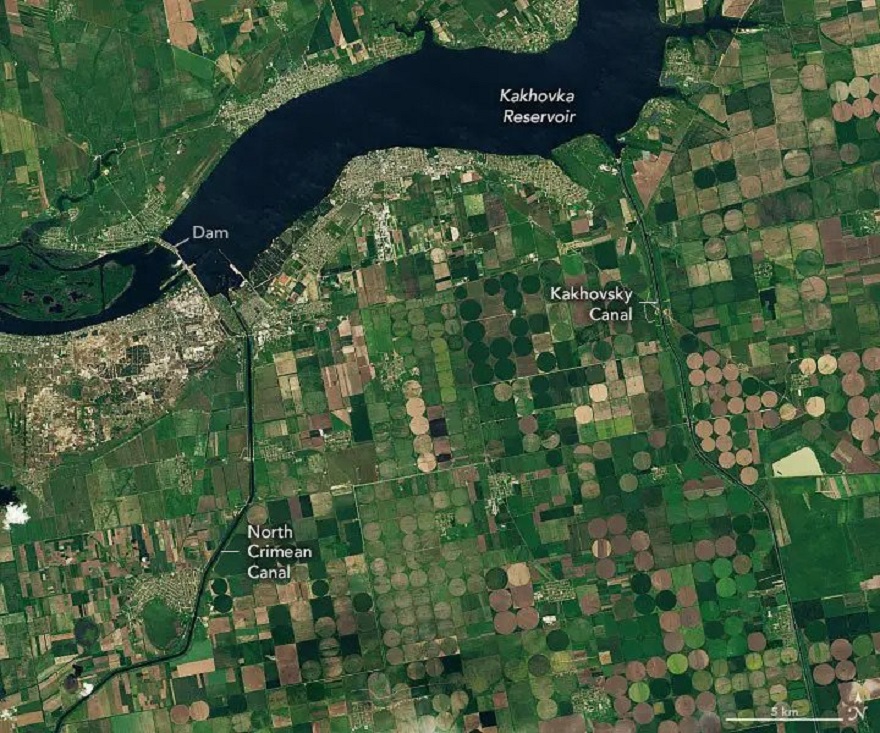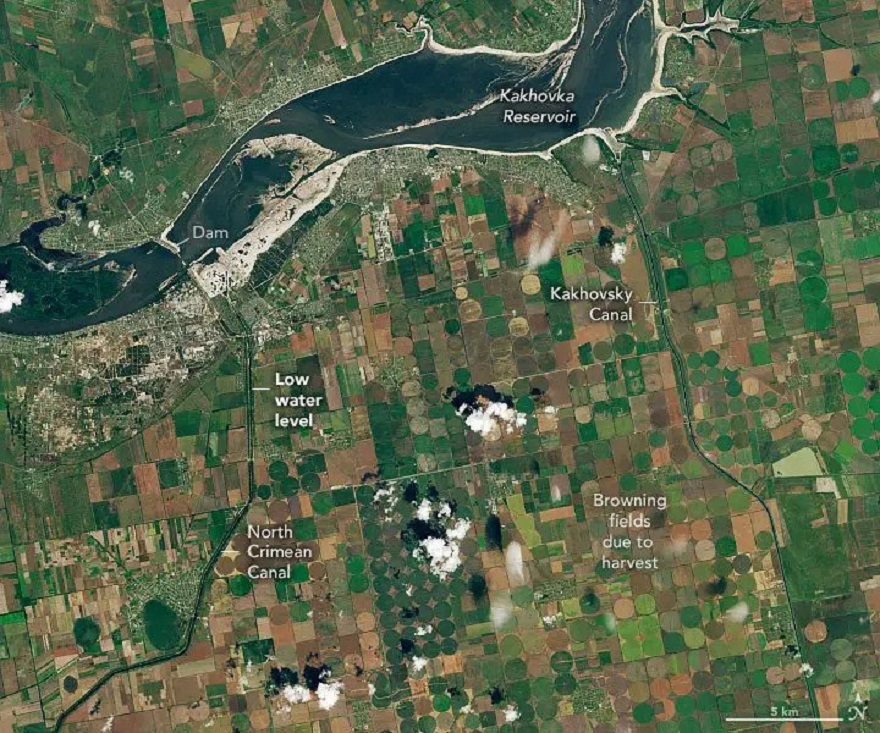The NASA Harvest team uses satellites to monitor how the situation is developing in the south of Ukraine. After the destruction of the Kakhovka HPP, the canals became shallow, and at the same time, there was a threat to the fields that were irrigated with them. However, no catastrophic consequences have been observed so far.

Consequences of the destruction of the hydroelectric power station on satellite images
The consortium of NASA Harvest scientists, which uses satellites to monitor the state of agriculture across the planet, is anxiously monitoring how the situation is developing in the south of Ukraine. After the Russians destroyed the Kakhovka hydroelectric dam on June 6, the reservoir, which was located upstream, ceased to exist.
And at the same time, water stopped flowing into the four main irrigation canals that took it from this reservoir. It just stopped getting into the water intakes. Now NASA Harvest specialists are studying how this will affect agriculture in the region. This work is part of a much larger study that aims to understand how the Russian invasion affected crop production in Ukraine.

According to already published data, the water intakes of all four canals have been empty almost since the very moment of the terrorist attack. However, so far they have not completely dried up due to the fact that in the spring and in June there were heavy rains.
Possible desertification
The natural ecosystem on the territory of Zaporizhzhia, Kherson and the south of Dnipropetrovsk regions is a semi-dry steppe. During the summer, there is usually from 100 to 120 mm of precipitation. This is not enough for growing cereals, corn, sunflowers, watermelons and tomatoes. However, since the 1960s, a network of canals with a total length of 12 thousand km has been built here, which provide 500 thousand hectares of fields with water.

However, now they are all empty and the Ministry of Agrarian Policy of Ukraine warns of the threat of desertification of several million hectares starting from 2024. NASA Harvest has not made any final conclusions about this yet. They compare the images of the Kakhovka reservoir by the Landsat 8 satellite on June 7, 2022, with similar photos of Landsat 9 on June 18, 2023, and state that yes, it is empty.
NASA Harvest also published photos of water intakes and confirmed that they were dry. However, it urges not to start a panic about the fact that the fields on these photos have turned brown. This is just the result of the winter crops being removed from them.

The consortium uses specialized tools such as GIMMS Global Agricultural Monitoring and AGMET EO Indicator dashboard, which allow them to assess the health of plants based on how green they are. And they, as of the beginning of July, did not show any significant deviations.
However, NASA Harvest still notes that the danger for those crops that will be harvested in late summer – early autumn still exists. At the end of June, they predicted that the wheat harvest in Ukraine this summer would amount to 25 million tons. This is 2 million tons less than the average harvested in the state over the past five years.
According to scitechdaily.com
Follow us on Twitter to get the most interesting space news in time
https://twitter.com/ust_magazine

